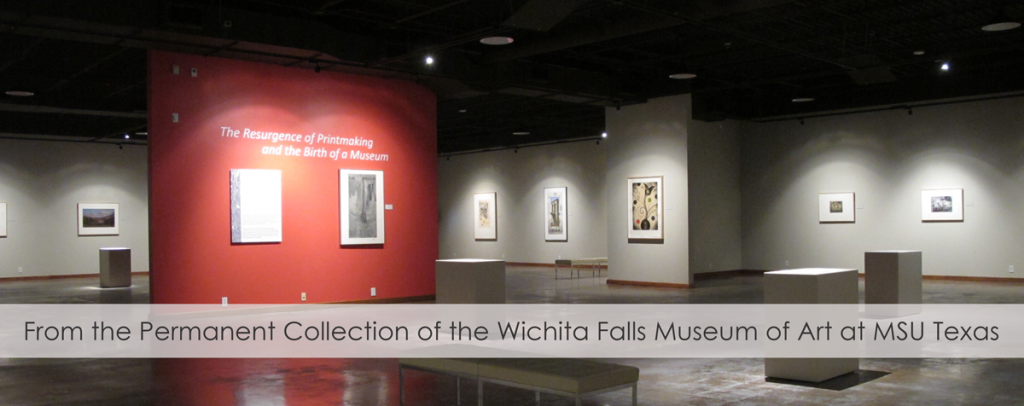This exhibition, featuring art from the permanent collection, explores the significance of printmaking in the founding of the Wichita Falls Museum of Art.
In the decades leading to the 1960s, American Abstract Expressionist artists abandoned use of the image, favoring instead expression of personal emotion through the subconscious application of paint on canvas. The Abstract Expressionist style dominated art making in the US until the 1960s, when artists, such as Jasper Johns, reclaimed the use of recognizable imagery and, along with it, a historically democratic art medium.
The emergence of professional print studios in the 1960s enabled well-known painters to work with skilled printers. Together they created editions or multiples of a fine art print. The increased volume of a single artwork democratized art collecting, making works by accomplished national artists broadly accessible.
What else happened in the 1960s? The WFMA was born.
WFMA founders and patrons tapped into this energy with a collecting mission focused on American artworks on paper. Their legacy continues today in the WFMA Collectors Circle and has created a community resource containing over 1100 prints. These artworks allow us to experience intricacies in printmaking processes, understanding of visual language, and themes important to humanity.
Here we see all of the major printmaking techniques: lithography, serigraphy (screen print), relief (woodcut and linocut), intaglio (etching, dry point, engraving, mezzotint, aquatint), and monotype, each a unique and layered process. In your looking, experience not only the imagery portrayed and its possible meanings, but also details in line, color and tone, achievable only in printmaking.
